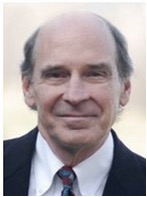By ANISH KOKA, MD
 I’m sitting amidst a number of cardiologists to go over the most recent trials presented at the interventional cardiology conference in Denver. The cardiology fellow presenting goes quickly through the hors de oeuvres until finally getting to the main course – ORBITA.
I’m sitting amidst a number of cardiologists to go over the most recent trials presented at the interventional cardiology conference in Denver. The cardiology fellow presenting goes quickly through the hors de oeuvres until finally getting to the main course – ORBITA.
ORBITA sought to test the very foundations interventional cardiology was built on – the simple idea that opening a stenosed coronary artery was good for patients. The trial was a double blind randomized control trial of patients with tightly stenosed arteries who either had a stent placed or had a sham procedure. Before the results are presented, the lay media headlines from cardiobrief, the New York Times, and the Atlantic are presented to guffaws from the audience. The indignant smirks are audible as the accompanying editorial remarks from Rita Redberg and David Brown are displayed :
”The results of ORBITA show unequivocally that there are no benefits for PCI compared with medical therapy for stable angina, even when angina is refractory to medical therapy.”
The trial results follow – no statistically significant difference in the primary outcome of exercise time increment between sham and stent, and no difference in angina between the two groups. The meat of the presentation involves the limitations of the trial that make the trial inapplicable – 200 patients total, 6 week follow up, the underlying heterogeneity of the patient angiograms that were randomized, and the wide confidence intervals of the primary outcome that swallowed the actual effect size. Two different angiograms were shown to the audience from the ORBITA appendix.
The images demonstrate two ‘blockages’. To the eye, at least, one appears tighter than the other. The audience was polled on each image – everyone voted to stent the tighter blockage and medically manage the lesser of the blockages. It could be all perception but I could feel the relief in the room as ORBITA was being made irrelevant. The implication clearly was that some angiograms used to show the lack of benefit from stents would not have needed stenting in the first place.
There was no real challenge to the presenter save for one:
“One of the authors – Rita Redberg – is very sharp – why do you think she wrote that editorial?”
There was no good answer – the presenter shrugged and muttered something about an anti-interventional cardiology bias.
It was at that moment that I realized why cardiologists were having such trouble with ORBITA – we were arguing like puritans. Everyone in the room already ‘knew’ stents worked. This was an exercise in bias confirmation when what was needed was an examination of the source of bias. Faced with the ultimate epistemological challenge we were resorting to authority to dismiss findings we didn’t like. Now I think cardiologists have authority with good reason, and certainly ORBITA may have limitations inherent in any small randomized control trial that’s performed, but we can do a better job answering the fundamental question raised here that relates to the primary evidence opening a narrowed artery actually can relieve angina.
Continue reading…
 I’ve previously written comprehensively on where to invest in Radiology AI, and how to beat the hype curve precipice the field is entering. For those that haven’t read my previous blog, my one line summary is essentially this:
I’ve previously written comprehensively on where to invest in Radiology AI, and how to beat the hype curve precipice the field is entering. For those that haven’t read my previous blog, my one line summary is essentially this:

 The U.S. tax system and health care are deeply intertwined. The Republican tax bills hurtling through Congress would make significant changes in this relationship.
The U.S. tax system and health care are deeply intertwined. The Republican tax bills hurtling through Congress would make significant changes in this relationship. The following blog post is adapted from a talk the author gave at the “Data Privacy in the Digital Age” symposium on October 26th sponsored by the U.S. Department of Health and Human Services.
The following blog post is adapted from a talk the author gave at the “Data Privacy in the Digital Age” symposium on October 26th sponsored by the U.S. Department of Health and Human Services.
 Recently, the New York Times published an article on excessive costs incurred by mid-level providers over-treating benign skin lesions. According to the piece, more than 15% of biopsies billed to Medicare in 2015 were done by unsupervised PA’s or Nurse Practitioners. Physicians across the country are becoming concerned mid-levels working independently without proper specialty training. Dr. Coldiron, a dermatologist, was interviewed by the Times and said, “What’s really going on is these practices…hire a bunch of P.A.’s and nurses and stick them out in clinics on their own. And they’re acting like doctors.”
Recently, the New York Times published an article on excessive costs incurred by mid-level providers over-treating benign skin lesions. According to the piece, more than 15% of biopsies billed to Medicare in 2015 were done by unsupervised PA’s or Nurse Practitioners. Physicians across the country are becoming concerned mid-levels working independently without proper specialty training. Dr. Coldiron, a dermatologist, was interviewed by the Times and said, “What’s really going on is these practices…hire a bunch of P.A.’s and nurses and stick them out in clinics on their own. And they’re acting like doctors.”







